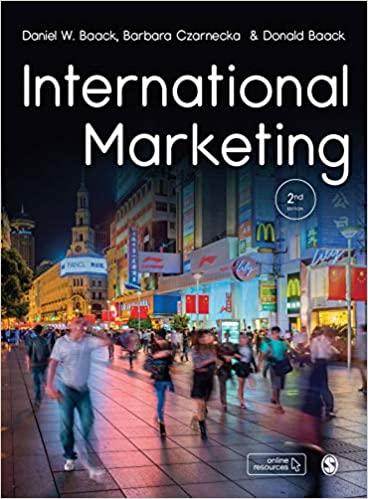DHL began as a small document courier between the West Coast of the United States and Hawaii.
Question:
DHL began as a small document courier between the West Coast of the United States and Hawai’i. The company has grown into one of the leading logistics and shipping companies in the world. Named for the three businessmen that founded the company in 1969, Adrian Dalsey, Larry Hillblom, and Robert Lynn, DHL has looked for new opportunities from inception. Recognizing a gap in the market, the company started by shipping papers to and from San Francisco and Honolulu.
The company also focused on international growth. The early 1970s witnessed growth in shipping to the Far East and Pacific Rim, including services in Japan, Hong Kong, Singapore, and Australia. The company expanded into Europe in the 1970s, opening an office in London in 1974 and in Frankfurt in 1977. At the same time, DHL expanded shipping into the Middle East, Latin America, and Africa. In 1983 the company began shipping to and from Eastern Europe. In 1986, DHL became the first express shipping company in China.
The 1990s led to more changes. The German company Deutsche Post became a shareholder in 1998, laying the foundation for eventually becoming the 100% owner in 2002. The company invested aggressively in expansion by opening a $60 million facility in Bahrain in 1993 and by introducing a major information technology center in Kuala Lumpur, Malaysia, in 1998.
DHL spent more than $1 billion on a fleet of airplanes for the European and African markets in 1999.
Deutsche Post took over greater operational control in the 2000s and the organization focused more on emerging markets. From 2003 to 2008, DHL invested more than $200 million to improve operations in China. In 2004, the company opened an information technology facility in Prague and in the Czech Republic, and also became majority owner of Blue Dart, an Indian express shipping company. By the end of the decade, DHL was conducting business activities in more than 220 countries and territories, with more than 3,000 customers and 300,000 employees, and was generating revenue of more than 46 billion euros per year.
Questions
1. Consider the expansion pattern of DHL. How might this relate to the integration activities discussed in this chapter?
2. Does the reduction of barriers to trade help or hurt DHL’s business? Justify your answer.
3. Visit the DHL small business website (www.DHLsmallbusiness.com). What are four activities on the website that facilitate small business trade?
4. Would a supporter of protectionism view DHL’s activities as positive or negative? Do you agree with that perspective? DHL delivery systems assist many small businesses internationally.
Step by Step Answer:

International Marketing
ISBN: 9781506389219
2nd Edition
Authors: Daniel W. Baack, Barbara Czarnecka, Donald E. Baack





